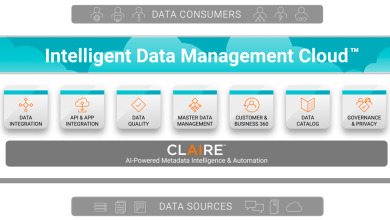
Organisations are currently moving full steam ahead towards digital transformation, with an abundance of companies moving their data and IT operations to the cloud. This begs the question: Are data centres, which for a long time have been the nucleus of an organisation’s information system, still necessary?
 To find answers, DSA reached out to Brian Groen, Vantage Data Centre’s President for APAC, who gave his insights on whether we’re seeing the beginning of the end for data centres.
To find answers, DSA reached out to Brian Groen, Vantage Data Centre’s President for APAC, who gave his insights on whether we’re seeing the beginning of the end for data centres.
Groen states that even though many businesses are shifting their workloads to the cloud, there is still a sizable amount of work that must be done locally and is particularly vulnerable to control or latency issues. However, the nature of the demand for data centres may have changed over the years.
“Although the demand for cloud services among hyperscalers is growing at a compound annual growth rate of over 25%, demand among businesses for colocation is either flat or dropping,” said Groen.
Since “the cloud” is physically housed in a data centre, its popularity has a multiplicative effect on the need for even more of these facilities. 41% of IT investment will have gone from traditional solutions to the public cloud by the year 2022, according to Gartner. By the year 2025, that number will have climbed to 51%. Cloud migration will cost company IT budgets over USD $1.3 trillion in 2022, and nearly USD $1.8 trillion by 2025, according to research firm Gartner.
Nevertheless, data centres remain indispensable and will continue to play a vital role to support enterprise digitalisation, especially in a number of scenarios, as Groen shares:
- Some applications are simply not ready to migrate to the cloud, for instance, legacy apps.
- Strict security and compliance requirements can be complex for cloud migration, especially for sensitive data sets.
- A lack of resources to manage cloud platform and migration.
- At scale, oftentimes it is more expensive to rely on the cloud vs. data centres.
- At scale, oftentimes users have more control using data centres vs. the cloud.
The Reengineering of Data Centres in Asia Pacific
According to Groen, the number of hyperscale data centres continues to skyrocket in recent years, putting them in a position for large and steady expansion over the next decade. The main reason behind the rapid expansion of data centres all over the Asia region is guided by concerns regarding data residency and data privacy. Currently, Cloud Service Providers are required to have multiple available data centre locations in order to both satisfy the regulatory requirements and extend their reach to an increasing number of users throughout the globe.
The need for data centres in Asia-Pacific is growing exponentially as right now it is beginning to reach Tier 2 and Tier 3 in the markets. It has expanded beyond Tier 1 markets as of now; The full focus is to fulfil the demands of global expansion and to solve problems such as the lack of available land and power, as well as restrictions regarding data localisation. In order to meet their technical/commercial requirements and their sustainability goals, hyperscalers are optimising and reengineering the designs of their data centres. This is pushing innovations that will attain higher levels of energy efficiency.

With the rising demand for data centres, there now seems to be a race among ASEAN countries to become a data centre powerhouse. Groen believes that there are several factors leading to it like a domino effect, with the biggest gain being the ability to attract investment from real estate and/or property developers to acquire land or repurpose existing assets and derive tax revenue, which will result in the opening of more job opportunities for the economy. As more jobs become available, there will be a sudden need and an increase in demand for highly trained professionals in the fields such as engineering and IT (cybersecurity, cloud and more). The demands of these highly trained professionals will kick-start the economy as cloud offerings will trigger a surge in economic activity that will inspire entrepreneurs of all stripes, from those launching local businesses to those building global behemoths.
Vantage’s Ongoing Plans
Vantage is said to have been committed to reaching net zero carbon by 2030.
“We build and operate campuses in ways that prioritise sustainability and environmental responsibility. Our goal specifically targets reductions for emissions that we control, including Scope 1 and 2 emissions, as well as reductions that we guide or influence in our supply chain. Vantage offers renewable energy options at all campuses in North America and EMEA. We take a proactive approach to designing highly efficient data centre campuses with industry-leading Power Usage Effectiveness (PUE). Tied to Vantage’s sustainability goals, for example, our Cyberjaya campus achieves virtually zero Water Utilisation Efficiency (WUE) by deploying the closed-loop chilling system that requires no ongoing water source,” said the APAC President for Vantage Data Centres.
With a focus on assisting major clients in achieving their present and future market objectives, Vantage Data Centres has grown through a mix of organic and acquisition-led expansion. The additional USD $1.5 billion in stock funding will help Vantage accelerate its growth in the Asia-Pacific region. As many large, hyper-scale, and cloud-based businesses are headquartered in the Asia-Pacific area, which is one of the fastest-growing in the globe, Groen believes that this requires a global digital infrastructure platform like Vantage to expand operations. Hence, Vantage plans to offer its customers additional key markets in which to do business with trusted partners who bring in-country knowledge and a commitment to building and operating high-quality, sustainably designed data centre facilities.
Data Centres Are Here to Stay, At Least For Now
In a nutshell, while it is a prevalent belief that cloud services are gradually displacing traditional data centres, the reality is that these services simply could not exist without one.
A data centre is necessary for any company that plans to undergo digital transformation, whether they choose co-location, the cloud, or a hybrid platform.
For the time being, know that the data centre will remain operational regardless of your decision. Traditional data centres may be phased out for new and improved, bigger, more efficient and sustainable data centres but we should not expect them to disappear any time soon as that would spell the end of the cloud as well.




